10 Things You Didn't Know About Your Teeth
November 16th, 2018
Curious to hear a few facts you may not have known about your teeth?
Check out the American Association of Orthodontist's latest post "10 Things You Didn't Know About Your Teeth!"
Curious to hear a few facts you may not have known about your teeth?
Check out the American Association of Orthodontist's latest post "10 Things You Didn't Know About Your Teeth!"
The American Association of Orthodontists posts lots of useful content on their website, and once again, they've provided some answers to common questions we frequently hear. To learn what makes an orthodontists a specialist in straightening your teeth, check out this link to the AAO Article, Is My Dentist Also an Orthodontist?
One of our favorite parts of being in Hilliard is the FANTASTIC Recreation and Parks Department! They are responsible for producing incredibly fun and family-friendly events all year long. We have been privileged to be able to participate as sponsors in the Hilliard Fall Festival for two consecutive years, and we want to thank you for coming to visit our table!
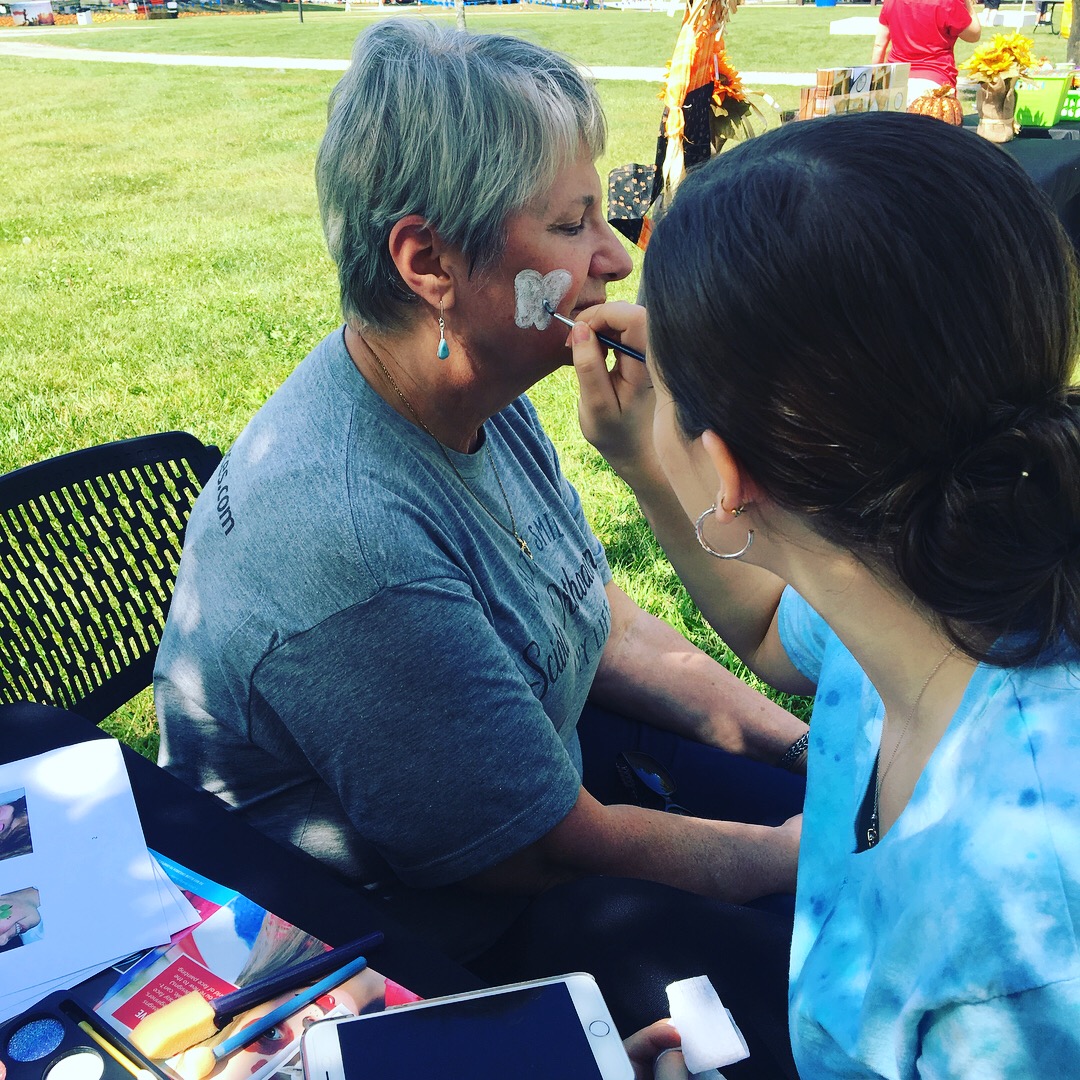
Once again this year, we offered face painting for kids (or adults... we don't discriminate!) and made ourselves available to answer questions about orthodontics, braces, smiles, Invisalign ... anything!
Thanks Hilliard!! We hope you'll join us again next year!!
Today, I simply want to thank each and every one of you - patients, parents, referring dentists, for a wonderful summer! It's hard to believe that schools are in session this week (or even last week as in a few cases!) and we'll soon be discussing pumpkin spice lattes and then gingerbread men. It's strange to notice the sun rising a little later and setting a little earlier. It's more typical these days to hear people talking about the vacations they took instead of the ones they're planning. The end of summer can be a little sad, but I've always loved the feeling of getting a fresh start when fall rolls around!
This year, we are celebrating the completion of our first full summer in the new office, and we're celebrating the upcoming beginning of our second year. It seems appropriate that we opened our office in September because the beginning of the school year always seems like a great time for a fresh start. This coming year we're looking forward to being even better than we were last year. We hope to continue to improve our level of service every day, and we'll keep working hard to make you happy!
We're sending you our best wishes for a happy, healthy, and productive school year! Thanks for a great summer, Hilliard!
By the time your child is about 6 years old, they will likely start to lose some baby teeth and begin to get new permanent teeth erupting. At this time, it's wise to start paying closer attention to how they bite in order to identify developing orthodontic problems.
This week's AAO article discusses what to look for in the developing dentition especially the inability to bite all the way together or difficulty chewing.
Check it out to learn more! AAO Guide to What to Look For
We're excited to be participating again this year in the Taste of Hilliard event at the Makoy Center on August 8th! Last year, the Taste of Hilliard was the first ever community event that we participated in before opening our office in September, and it continues to hold a special place in our hearts!
We loved meeting members of the community - hearing stories from parents about their own experiences with braces and meeting little ones with eyes wide as they checked out our orthodontic treatment models and started proactively choosing what colors they would choose on their own braces.
We'll be ready for the crowd again this year, with coupons and giveaways, and one lucky raffle winner will receive a WaterPik, perfect for keeping braces clean!
The Taste of Hilliard will be held from 4:30 to 7:30 p.m. on August 8th at the Makoy Center 5462 Center Street, Hilliard, OH 43026. For $15, you can plan to come hungry and enjoy TONS of amazing food from some of Hilliard's finest restaurants. See you there!!
Many parents are eager to start figuring out how their child's dental development is likely to proceed, and sure enough, there are clues even in the primary dentition (baby teeth) that can help deduce what orthodontic needs a child may have.
This week we are sharing an AAO article that discusses what you should be looking for in your child's baby teeth and why these things are important. The article discusses spacing and crowding of the primary teeth, the importance of hygiene and proper care, the purpose of maintaining the baby teeth for space preservation, and thumb/finger and pacifier habits.
Check out the AAO article here, and look for the follow-up post on what to look for in the permanent dentition soon!
When I meet a new patient for the first time, one of the questions I often ask them is, "How do you feel about being here?" Lots of kids are excited about getting braces because they've seen friends of siblings with them. In many other cases, however, I simply receive a shy smile, and Mom or Dad explaines, "I think he/she is a little nervous!"
If your first visit makes you a little nervous, rest assured, you're not alone!! It's normal to feel a little nervous visiting a new place or doing a new thing for the first time, and a trip to the orthodontist's office is no different. Knowing what to expect can make a world of difference both to young patients and their parents.
In our office, a new patient appointment begins with a tour of our new office so that you can see where and how you might spend your time once you're in treatment. One of our orthodontic technicians will take some photos of your teeth and a panoramic x-ray before Dr. Liz or Dr. Bethany spends some time with you to do an exam of your teeth and bite and to discuss treatment options.
Some important things to know about our first appointment?
Here's a link to the AAO's Guide to Your Child's First Visit with additional information that you might find useful. And as always, feel free to contact our office with any questions you may have!
Today on the blog, I'd like to introduce you to an amazing resource provided specifically for parents on the American Association of Orthodontists website. This guide covers numerous topics - everything from helping you understand the why and how of braces to tips while you or your child are wearing them.
If you'd like to get some unbiased information on how to choose an orthodontist or learn what a typical first visit should be like, check out this fantastic resource! In coming weeks, I plan to feature more specific content from this page. In the meantime, please begin browsing whatever speaks to you!
Here it is, the AAO Parents' Guide to Orthodontic Treatment!
Within the past few years, we've observed an exciting trend - the increasing adoption of WaterPik water flossers for improved hygiene with braces! Last week we had the privilege of having some in-person education on this product right in our own office.
An experienced dental hygienist who has been working with WaterPik and their products for years came to visit us and educate us on the effectiveness of this product as well as best practices for use.
We're well aware that hygiene while wearing braces, especially in children and teenagers, can be a challenge. It can become a point of frustration for parents, and poor hygiene can often lead to irreversible damage in the form of white spots and even cavities. For this reason, we hope to offer our patients all the help we can!
Using a WaterPik can remove over 99% of plaque from difficult-to-reach surfaces, and most patients seem to find it more convenient and less time-consuming than flossing. In addition, mastering the technique is often easier, and patients can become more competent at completing their hygiene routine with the WaterPik.
Going forward, we are pleased to be able to offer our patients discounted prices on WaterPik water flossers if they'd like to add this to their hygiene routine. We believe it could make the difference between an acceptable result and an outstanding one! Please contact us for more information - we look forward to helping you enjoy the experience of achieving a beautiful smile!
If you've checked out our website and social media pages, then you know our motto, "Healthy Smile, Healthy Life" came about because we believe in pursuing all kinds of healthy habits, not just great dental health!
Exercise and fitness has been a top priority and hobby for both of us for years, and running is one of our favorite types of physical activity!
As usual, this year, Hilliard will be the home of the Hilliard Classic, a race day including a half marathon, 10k, and 5k. Dr. Bethany will be there running the 5k to celebrate Father's Day with her dad and her husband, Dan, a new dad this year!
If you're interested in enjoying some physical activity with us on a sunny summer Sunday morning, check out the Hilliard Classic and consider registering for one of the 3 race distances. Whether you're running or walking, it feels good to start the day with fresh air and movement!
Race information and registration information can be found at:
https://runsignup.com/Race/OH/Hilliard/HilliardClassic?remMeAttempt=
 As with many things in life, when you stop learning and start coasting, you can easily fall behind the times. That's why we are committed to lifelong learning and consistently bettering ourselves and our ability to bring you top-notch care - the fastest, easiest, and most comfortable orthodontic treatment.
As with many things in life, when you stop learning and start coasting, you can easily fall behind the times. That's why we are committed to lifelong learning and consistently bettering ourselves and our ability to bring you top-notch care - the fastest, easiest, and most comfortable orthodontic treatment.
You may wonder how much there is to learn in orthodontics. Aren't teeth pretty much always going to be the same? Well, yes, the teeth stay the same, but the way we move them and our ability to provide a great treatment experience keep getting better. One of the ways we stay up to date and continue to improve is by attending continuing education courses. The Annual Session hosted by the American Association of Orthodontists is one such opportunity where educators, vendors, and colleagues come together to exchange ideas and information.
This past weekend Dr. Liz attended the Annual Session in Washington D.C. She came home with lots of new ideas for delivering great care the way that you want it! One of the major themes at the Annual Session this year was clear aligner treatment. As patients' interest in clear aligners increases, more and more companies are offering diverse options in products, and more educators and sharing valuable tips and tricks for making aligner therapy more effective than ever before.
As specialists in orthodontists, we are proud to be able to bring you all of these options. Each has its own strengths in terms of flexibility, cost, and customization, and we believe that we are in a unique position to help you navigate the right clear aligner treatment for you.
Of course, that's not all the Annual Session was about! As usual, a whole host of concepts were discussed from surgical treatment to 3-D imaging for better diagnosis and treatment set-ups to improvements in clinical efficiency. Over the course of the next year, we're excited to begin passing on these valuable pearls to our patients, and then once again, we hope to return to step up our game again next year!
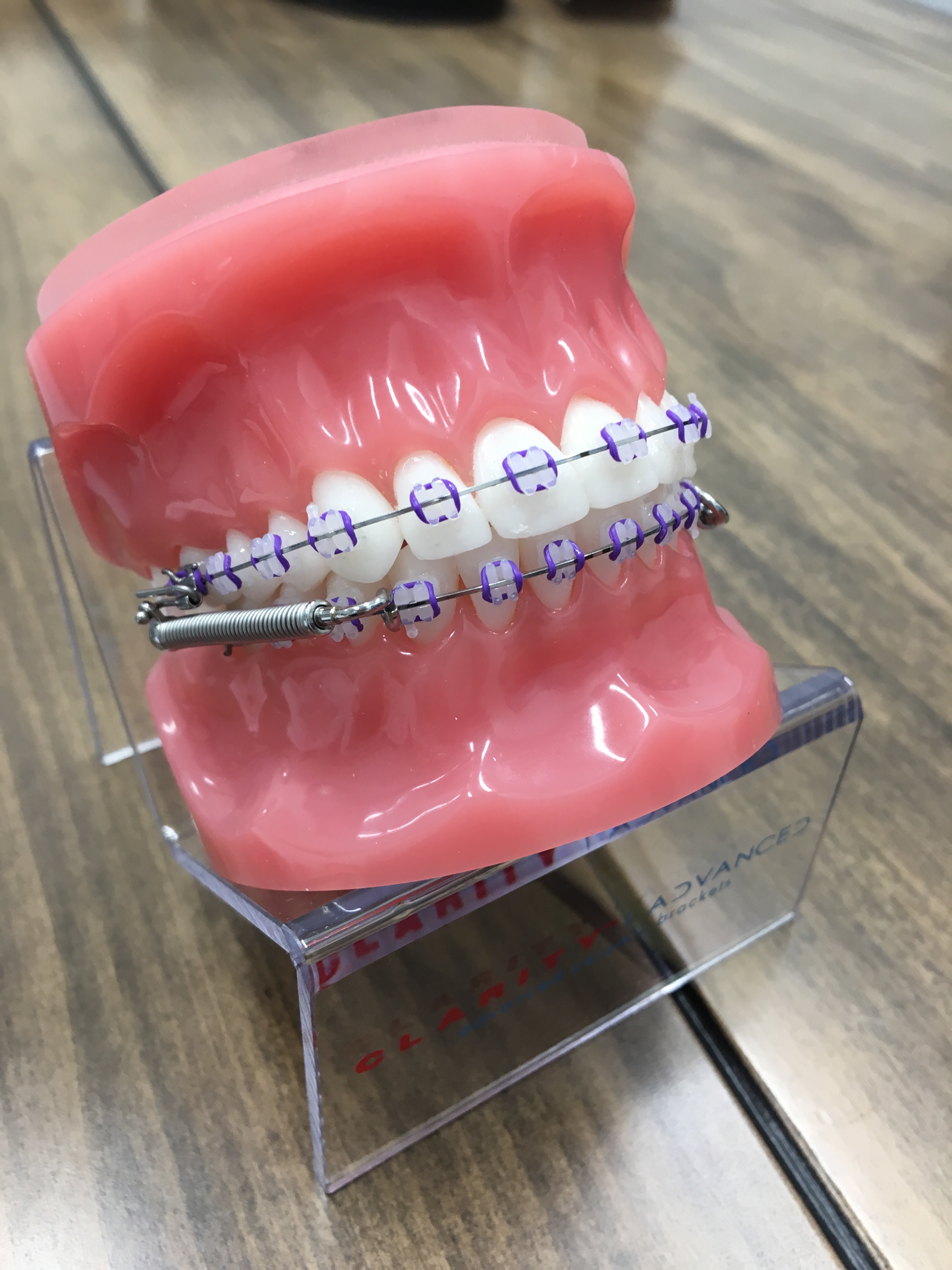
If you had an experience like ours with braces in the 90's, it's not unlikely that you were one of many lucky kids who got to enjoy wearing a headgear! Today, as you anticipate bringing your children to visit the orthodontist, you might be a little bit wary, wondering if they'll have to deal with the same hassles that you did. While many things are the same, the good news is that there have also been many advances in treatment - namely in the form of new appliances that can make treatment more successful, faster, and even more comfortable for patients.
Today, we want to introduce you to the Forsus appliance. The purpose of a Forsus appliance is to improve "overjet." (Overjet is when the upper front teeth are too far ahead of the lower front teeth. Many people also think of this as "overbite.") It can be used for the same purpose as a headgear, but it has several advantages.
Lots of patients are surprised when the learn about the advantages of the Forsus appliance, and many even tell us that they prefer wearing these springs when compared to rubber bands. Please feel free to take advantage of our complimentary consultation process to learn whether a Forsus appliance might help you reach your treatment goals!
Many parents are surprised to learn that their child might need braces as early as age 7 or 8. Lots of these parents remember getting braces themselves around age 12 or 13, and their initial reaction is, "That seems really young for braces. I didn't need them that young. We're going to wait." Waiting until 12 or 13 is still the right choice in lots of cases, but there are a few problems that require intervention sooner. We only recommend early treatment in cases where we know we're likely to get a better long-term result by taking action sooner rather than later.
Today we're going to discuss one of these types of problems, the anterior crossbite or underbite.
Anterior crossbites can be caused by a couple of different problems. Sometimes they result from disparities in jaw growth between the upper and lower jaws. This is significant because at age 7 or 8, we have the greatest likelihood of being capable of influencing the patient's jaw growth. As they get older, it becomes increasingly difficult and the results are less robust. In severe cases, early intervention may be able to help the child avoid requiring a surgical correction later in life.

Another possible cause of an anterior crossbite is the misalignment of teeth in jawbones that are growing normally. If upper teeth erupt into the mouth but are tipped too far back or lower teeth erupt that are tipped too far forward, an underbite can result. Once the teeth have come in with this relationship, they will not self-correct. In fact, they will only get increasingly "set in their ways" if you will as time goes by. This means that they will become increasingly difficult to correct. In addition, leaving these teeth in the wrong positions for too long can lead to other unrelated problems. For example, lower teeth that are trapped in a forward position are more likely to experience recession of the gums or mobility.
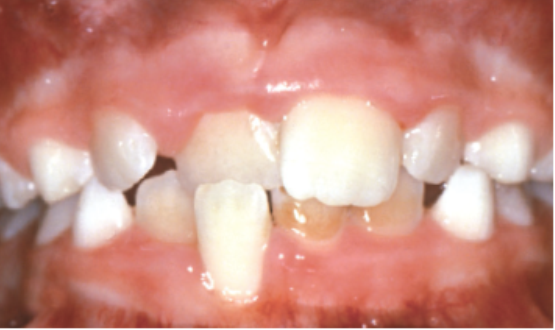
If your child is experiencing any of these problems, it's a wise choice to speak with an orthodontist. In our office, like most offices, consultations are free, and you will at least leave armed with the knowledge you need to know whether you want to proceed with treatment or allow more time. As always, we welcome your calls and emails if you have any questions!
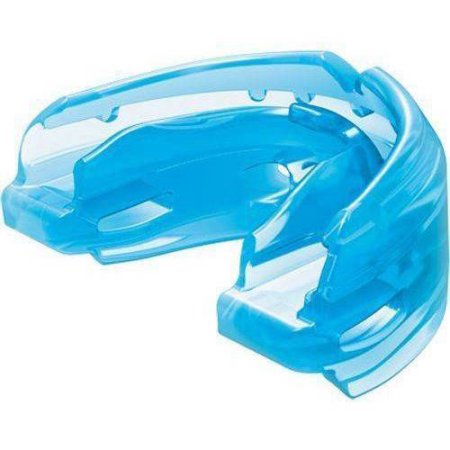
Spring sports season is in full swing these days, and we get lots of questions about how braces will influence playing sports. These questions usually surround concerns regarding 1) injury, and 2) time spent wearing elastics and retainers.
In the case of many sports, especially those involving lots of contact like basketball and wrestling, or those involving balls and/or equipment that could accidentally contact a player's face, parents are wise to seek extra protection for their child's teeth. Generally we advise that any sport that recommends a mouthguard, even if it isn't a requirement, is a sport in which the player should definitely be proactive about protecting his or her teeth. Certainly, you want to be cautious even without braces. Any patient can experience an injury that leads to the loss of or damage to a tooth or teeth. With braces on, the risk of injury to the lips and gums are also increased because of the extra appliances in the mouth. Wearing a mouthguard can reduce the risk of teeth being broken or knocked out. In addition, the plastic from the mouthguard separates the braces from the lips, helping to avoid cuts and soft-tissue injury.
Sometimes wearing a mouthguard can be more challenging with braces. There are ready-made orthodontic mouthguards available that you can invest in with special grooves where the braces fit. You can also use a traditional boil-and-bite mouthguard with braces. The way you fabricate your guard will simply be a little bit different. Before biting into the warm mouthguard, take a strip of wax and lay it across your braces. This will prevent the plastic from flowing into the grooves around the braces and wires and becoming difficult to remove. Finally, there are some appliances that we use in conjunction with braces (like the Forsus appliance, for example) which make it difficult to wear a full-length mouthguard. We advise, in these cases, that you cut the back portion of the mouthguard off to shorten it slightly and make it possible to fit in with your appliance.
If an injury does occur, your first call should be to your general or pediatric dentist who is the expert in assessing damage to and repairing the teeth. They may take an x-ray to ensure that no teeth or bones have been broken. If a tooth has broken or knocked out, they will recommend the proper course of action. In many cases, the orthodontist may be involved in the recovery as well. Sometimes if a tooth has loosened due to injury, the braces can be used to stabilize the tooth, and your dentist can advise you if they'd like you to see us to assist with this stabilization. In addition, once the risks to the teeth, lips, and bones have been addressed with your dentist, you should also evaluate to see if any braces or other appliances are broken or loose. If so, as with any other broken appliances, you should give our office a call, and we can advise you on whether you need to come in right away or if the breakage is minor enough and can wait until your next visit for an easy repair.
As I mentioned, another concern that often arises during sports seasons is finding time to wear things like elastics and retainers. If a mouthguard is required for your sport, then this takes precedence over the use of any special appliances! We always give permission to leave rubber bands and retainers out while you're engaged in playing your sport. (If you play a non-contact sport (like track and field) and feel comfortable wearing your rubber bands or retainers, it's ok to go ahead and keep them in, but we do not require it.) Often, especially for serious athletes, there can be many hours spent each day on practices, games, and meets. It's can be challenging to find enough time to wear your appliances, but rest assured that it can be done! We suggest keeping extra bags of rubber bands around at all times and putting a fresh pair in every time you have an opportunity. At a tournament all weekend? Make sure the rubber bands are in between games. Even if you only have half an hour, it's important to put them back in and let them keep working. By making the effort, you can still make progress during your sports season, or at least avoid taking a step backwards!
Keep smiling, friends!
One of the challenges we deal with during orthodontic treatment is maintaining excellent oral hygiene. This is a challenge for a couple of reasons. First, many of our patients are young and still struggle with the necessary motor skills necessary to be truly effective at achieving great hygiene. And second, whether using braces or aligners, while in orthodontic treatment, there are often more places for plaque and bacteria to hide out which means that getting a good result from brushing might take a little more time and effort than usual. Why is this so important? Poor hygiene can lead to cavities and gum disease, or white spot lesions. Not familiar? Here's a picture of white spots that were seen on someone's teeth after braces were removed:

So what should we do about this? Well, the best defense is a good offense! In other words, I'm saying that prevention is key. White spots are difficult to treat once they've occurred, so avoiding them in the first place is your best bet. Here are some tips for avoiding white spots!
With a little effort, you can finish your braces treatment with beautiful stain-free teeth!! As always, you can find more information on our website at www.sciotobraces.com. Keep smiling, friends! :)
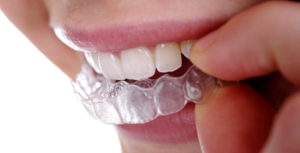
The popularity of at-home, do-it-yourself orthodontic treatment has increased dramatically in the past year, and we can imagine you might have lots of questions about this method of treatment! You hear advertisements on TV describing how easy and inexpensive mail-order orthodontic treatment is. (Saving you all those "pesky" visits to a dental professional's office... ) And you may also hear dentists and orthodontists warning against the risks of DIY orthodontics, but perhaps it isn't clear what the risks are?
So today, I'm going to break down a few of the unanswered questions based on my current understanding. First of all, let's define what we're talking about. What is DIY orthodontic treatment? Thirty or forty years ago, DIY orthodontics may have consisted of a dentist telling Mom to save her money on braces and have her son or daughter hold a popsicle stick in their mouth while watching TV at night to correct a crossbite. So DIY orthodontics isn't a new idea, but it has at least gotten a little more advanced! In this case, I'm referring specifically to mail-order clear aligners. These are marketed as invisable aligner treatment without the need to visit a doctor's office. You fill out a form online and pay a nominal fee to request some materials from the company. They send you a kit that you use to take an impression of your teeth at home. You send the impressions back, and they propose a treatment plan. You then have the option to view a video animation of how they expect your teeth to move and pay for the aligners if you want to. They are reportedly reviewed by a licensed dental professional, but you will monitor your own treatment at home. I don't have any first-hand experience with these companies, but I'm guessing (and hoping) that they remain available for questions throughout your treatment.
So, what are the advantages that they advertise?
And what are the disadvantages we've been talking about?
So, should you try it? We are obviously fans of treatment that is supervised by an orthodontist, but most importantly, we just want you to be aware of the risks and benefits before you make the decision to try this type of treatment! And if you decide against it or if you've already tried it and you're not satisfied with the results, we are still here for you!
Keep smiling, friends!
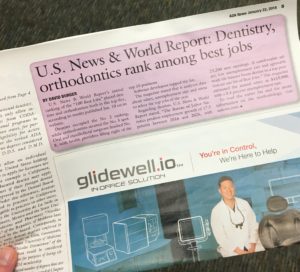 In case you missed this little blurb of news recently, we were excited to see the U.S. News Report's latest list of Best Jobs for 2018! We saw great news for dental practitioners and healthcare workers of all types! The report bases its rankings on many factors including job satisfaction (work-life balance), compensation, and job security. And the good news? The report lists "Dentist" as No. 2 overall and "Orthodontist" as No. 5!
In case you missed this little blurb of news recently, we were excited to see the U.S. News Report's latest list of Best Jobs for 2018! We saw great news for dental practitioners and healthcare workers of all types! The report bases its rankings on many factors including job satisfaction (work-life balance), compensation, and job security. And the good news? The report lists "Dentist" as No. 2 overall and "Orthodontist" as No. 5!
So, why are we so excited to share this news with you? Well, as it turns out, one of the awesome things about being an orthodontist is that we have a chance to meet lots of young people! As our patients progress through elementary, middle, and high school, they often start to think about what kind of job or career they might like to have, and we hope that we can be one resource for them as they make this extremely exciting decision about the direction of their lives.
In case you're interested in dentistry or orthodontics, here are a few tips to consider:
There are many more ways you can learn about and prepare for a career in dentistry or orthodontics, and we are always happy to answer questions. Even if you just want to know what it's like to do our job - we're happy to chat! There are pros and cons as with every job, but overall, we think that a No. 5 spot on the Best Jobs lists is well-justified! We feel so lucky to do what we do every day and share our passion with our amazing patients!
Keep smiling, friends! :)
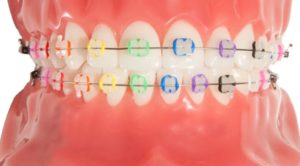 Any time we do a consultation for treatment with braces, one of the most common questions we receive is, "How long will I have to wear braces?" Of course, this is no surprise - we would want to know the same thing!
Any time we do a consultation for treatment with braces, one of the most common questions we receive is, "How long will I have to wear braces?" Of course, this is no surprise - we would want to know the same thing!
The answer is complicated! Your treatment time depends on several things, most importantly, the complexity of your case. If you have a more severe bite problem than your best friend, odds are that you will wear braces for a longer time frame. In addition, everyone's teeth move at different speeds. As with all biological processes, our bodies differ from one another's. Your teeth will move at a pace dictated by your biology and the amount of force applied.
While you don't have the ability to control these factors, the good news is that there are lots of variables that you can control about the speed of your braces! Whenever I explain the duration of braces to patients, I tell them that there are three major things they can do to influence the speed of their treatment. Here are my recommendations for speedy treatment!
So there you have it! All the tools you need to speed through treatment with braces!! Good luck :)

I have talked to plenty of patients over the years who have been a little bit confused about the difference between an orthodontist and their general dentist. In some cases, when the patient's dentist does some orthodontic treatment, they will even tell me, "Well, my dentist is also an orthodontist." And I can see why they're confused!
Dentists are the go-to providers for several types of procedures. For example, routine maintenance visits with your dental hygienist are nearly always performed at your dentist's office. The dentist is likely the person who should repair cavities, extract some teeth, and often provides restorations like crowns, bridges, and dentures. While this is the bread and butter of basic dentistry, they are also trained to perform treatment for all types of problems including root canals, minor surgeries like tooth extraction, periodontal treatment, and orthodontics. Each dentist provides these treatments at their own level of comfort, preference, and expertise, often depending on what type of additional training they have chosen to pursue.
However, there are also specialists for each of these types of treatment who limit their focus to exclusively work in their one area of dentistry. As a result of their additional training and limited focus, these specialists are generally the best equipped to handle a wide variety of cases from minor to severe. They will usually have a vast array of treatment options and tools at their disposal because their practices are focused very specifically on addressing the problems of their specialty.
An orthodontist, as well as all other dental specialists, begins their training by completing the four years of dental school. After dental school, each new doctor can choose to begin practice as a general dentist or to enter a residency program either to enhance their skills as a general dentist or to enter a specialty like the ones I mentioned above. To become an orthodontist, a dentist must complete a full-time residency of 2-3 years after dental school. During their residency, they spend time learning theories on tooth movement, becoming familiar with the most up to date tools of the trade, understanding the biomechanics of tooth movement, and most importantly, treating lots of orthodontic cases alongside trained faculty members. Upon completing residency, these doctors are well-prepared to diagnose and treat almost any type of bite problem and even some facial deformities. They are also trained to work on teams alongside the patient's general dentist and in some cases surgeons, periodontists, and other specialists when the situation calls for a multi-disciplinary treatment approach.
What does this mean to you as a patient? If you are interested in tooth movement performed by an orthodontist, whether for esthetics or function, we recommend finding an orthodontist in one of a few ways. First, consider asking your dentist for a recommendation. You can also try visiting the American Association of Orthodontists' website, mylifemysmile.org, and search for an AAO member orthodontist in your area. It doesn't hurt to ask friends for referrals as well or to visit good old Google and check out the reviews for local orthodontists. When in doubt, call the office and ask any questions - odds are they will be happy to help you learn about their office and guide you through the process.
As always, with any questions, please feel free to contact us by email at info@sciotobraces.com or by phone at 614-363-2525
Good luck beginning your braces journey!!
 First of all, let us congratulate you! Making the decision to do something healthy for yourself is something that should make you feel tremendously proud! We've noticed that lots of our patients don't seem to enjoy this pride and excitement until they're having their braces removed, but we're ready to change that. We truly believe that you deserve to be proud of the process, not just the result!
First of all, let us congratulate you! Making the decision to do something healthy for yourself is something that should make you feel tremendously proud! We've noticed that lots of our patients don't seem to enjoy this pride and excitement until they're having their braces removed, but we're ready to change that. We truly believe that you deserve to be proud of the process, not just the result!
Just think about it. Lots of people have goals to achieve a fitter physique, a healthier blood panel, a straighter smile, improved mental health and clarity. Why doesn't everyone always meet their goals? That's likely because inaction is always the easier choice, especially when reaching that goal can take time and effort. It's much more fun to pursue instant gratification! It takes a special kind of person to commit to a process in order to reach a goal, and you have decided to be that kind of person! Let's celebrate that!
Not only can orthodontic treatment improve your physical oral health, but an improvement in the appearance of your smile may also have a major impact on your self esteem, a key component of your overall psychological well-being! And in some cases, orthodontic treatment improves the function of your teeth, making it possible to bite or chew with comfort where there had once been pain - what an awesome way to influence your overall quality of life!
So yes, orthodontic treatment results may not happen overnight. Perhaps you've even heard of short-cuts that sound a little too good to be true (hint: they probably are). However, patience and dedication are most often rewarded with the best results, results that last a lifetime and have an impact for years to follow.
So, once again, if you've made the choice to undertake a journey in orthodontics, we congratulate you because you are demonstrating to yourself and the people around you that you take your health seriously. You're setting a positive example for the others in your life.
So many patients are solely focused on the end result, but our hope is that you will begin to enjoy the process! We hope that you wake up in the morning and feel excitement because you're in the process of doing something great for yourself! You may not see changes every day, but that doesn't mean they aren't happening. Part of the process is being patient, and you can rest assured that by continuing your journey, you are each day one step closer to success.
We only get one chance to take care of these amazing physical specimens that are our bodies. Let's treat them with the respect they deserve. We hope you enjoy your journey and take pride in your commitment. We hope that you smile proudly, never hesitating to show the world that you are in the middle of an exciting transformation! We hope that you're excited to share your choice with friends and family! You deserve to be excited about this! You're doing something wonderful, and hopefully you'll inspire everyone around you to do something wonderful for themselves as well!
We're here to join you along the way with tips and suggestions for enjoying the process. Hope you'll come along for the ride! Here's wishing you a happy braces journey!
Thank you for taking the time to visit our blog. Please check back often for weekly updates on fun and exciting events happening at our office, important and interesting information about orthodontics and the dental industry, and the latest news about our practice.
Feel free to leave a comment or question for our doctors and staff - we hope this will be a valuable resource for our patients, their families, and friends!